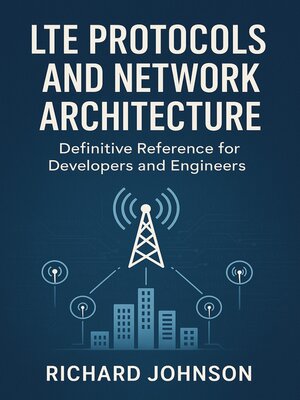LTE Protocols and Network Architecture
ebook ∣ Definitive Reference for Developers and Engineers
By Richard Johnson

Sign up to save your library
With an OverDrive account, you can save your favorite libraries for at-a-glance information about availability. Find out more about OverDrive accounts.
Find this title in Libby, the library reading app by OverDrive.



Search for a digital library with this title
Title found at these libraries:
| Library Name | Distance |
|---|---|
| Loading... |
"LTE Protocols and Network Architecture"
"LTE Protocols and Network Architecture" offers an authoritative and comprehensive exploration of the LTE ecosystem, charting its evolution from legacy cellular systems to the robust, standards-driven networks of today. Beginning with the historical context and essential design motivations behind LTE, the book provides readers with a nuanced understanding of the technical, regulatory, and business factors shaping modern mobile broadband. In-depth comparisons to preceding and emerging technologies—including HSPA, WiMAX, and early 5G—contextualize LTE's pervasive role in the wireless landscape.
The book delves into the architectural foundation of LTE, meticulously detailing core components, interfaces, and protocols that govern both user and control planes. Readers will gain insight into E-UTRAN and EPC elements, deployment strategies for small cells and heterogeneous networks, as well as state-of-the-art approaches such as network function virtualization and cloud-native architectures. Extensive focus is given to radio access procedures, security frameworks, and advanced mobility management, equipping practitioners with practical knowledge of bearer establishment, handover mechanisms, and resilience in failure scenarios.
Beyond the protocol stack, "LTE Protocols and Network Architecture" addresses the full lifecycle of LTE network operations: from quality of service provision, resource allocation, and VoLTE integration, to comprehensive OAM (Operations, Administration, and Maintenance) practices and self-organizing network features. Readers are guided through strategies for performance measurement, troubleshooting, field validation, and future-facing enhancements including LTE-Advanced, IoT enablement, and the technology's seamless migration path toward 5G. With its blend of technical depth and real-world application, this book is an essential resource for engineers, network architects, and decision-makers seeking mastery in LTE networks.







